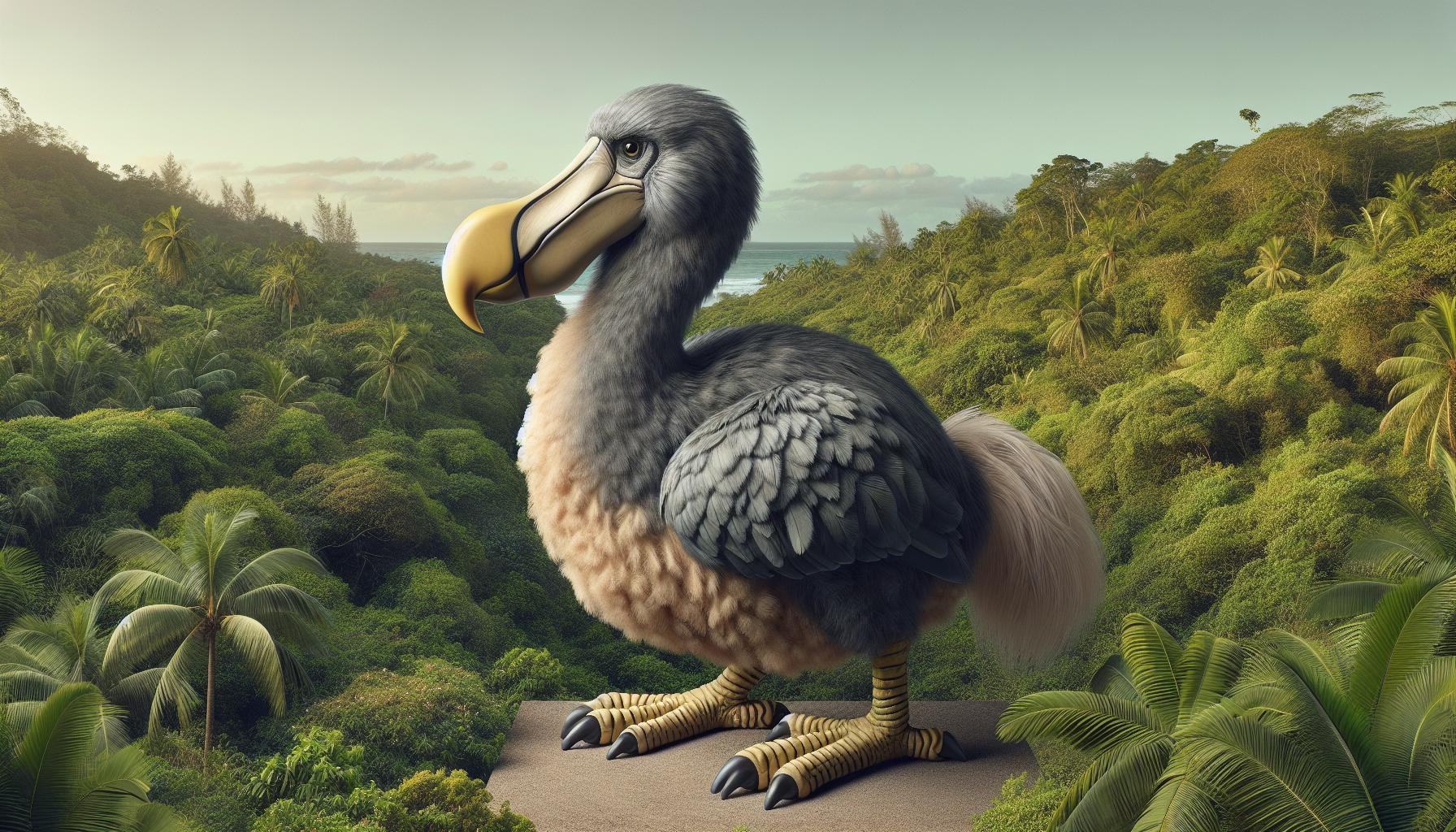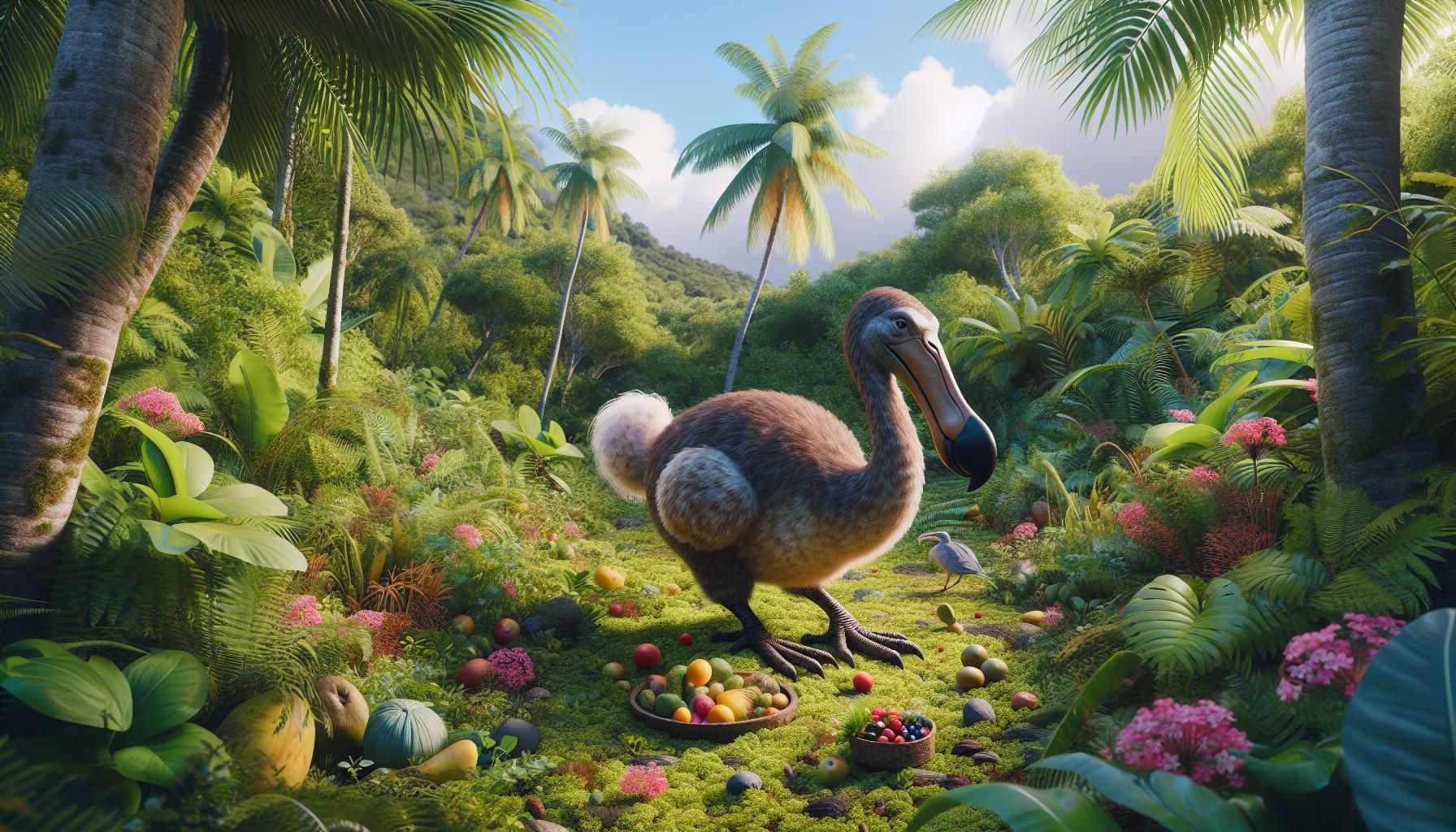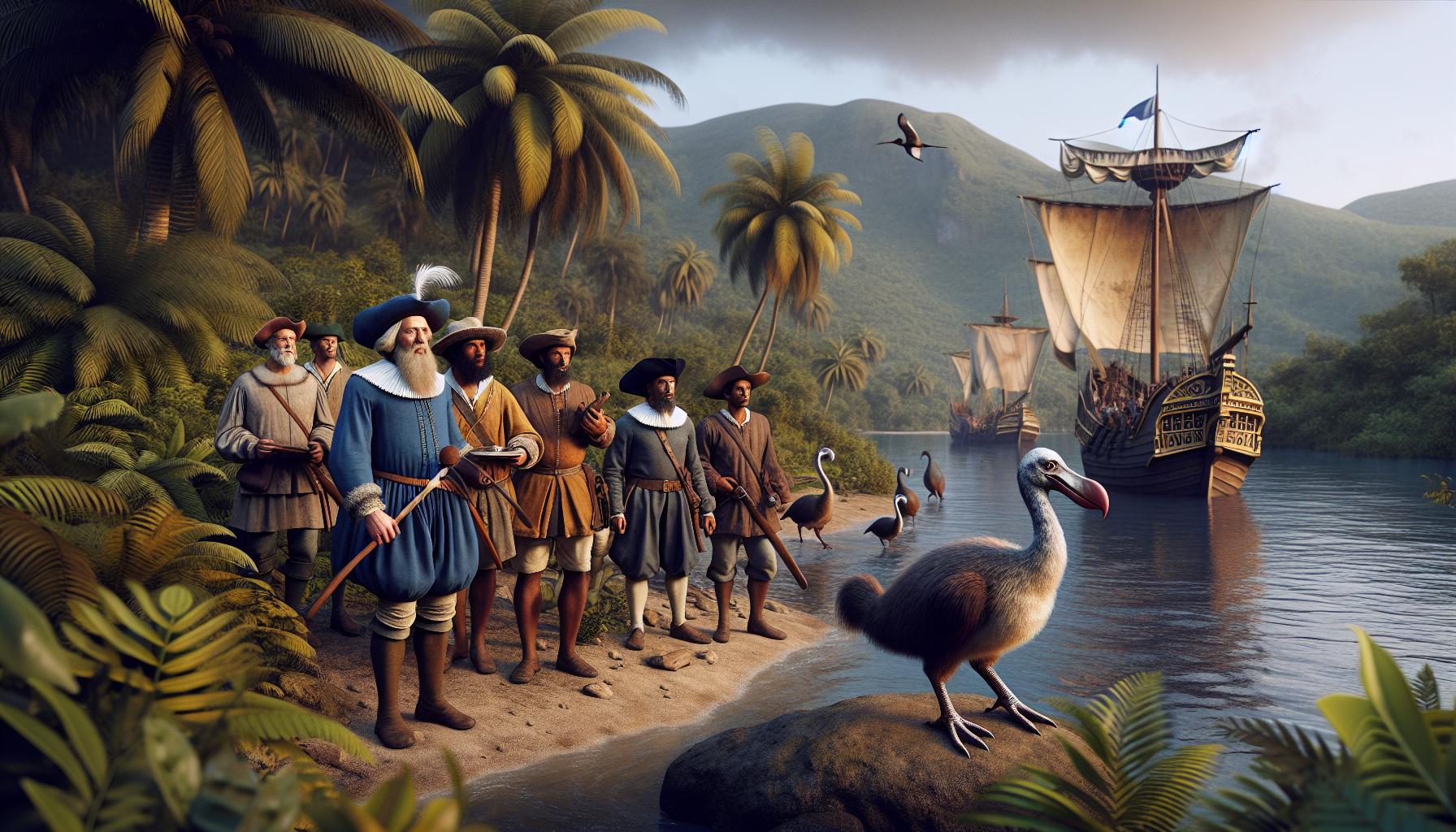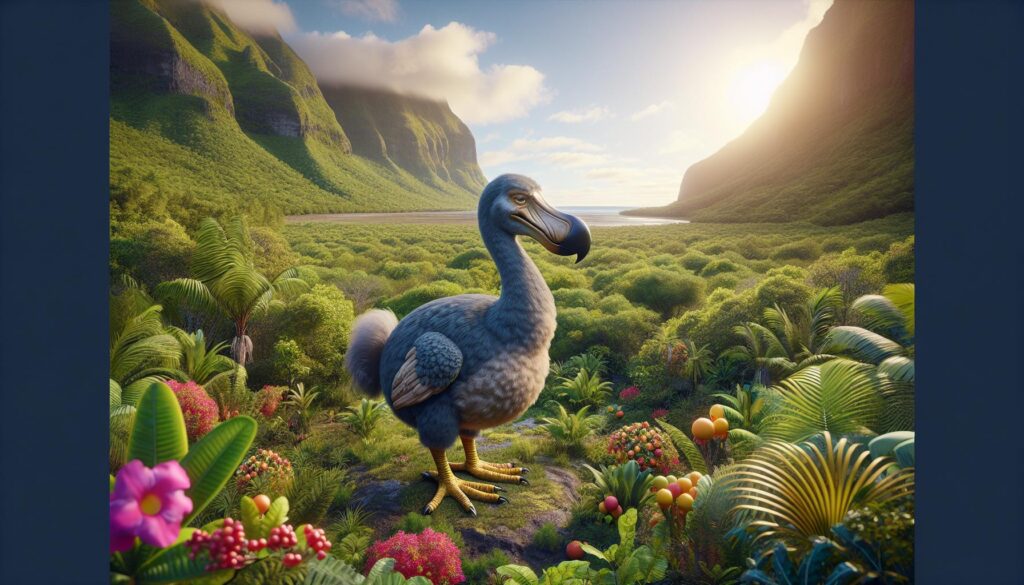I’ve always been fascinated by the dodo bird a species that’s become synonymous with extinction. As a flightless bird that once roamed the island of Mauritius the dodo captured imaginations worldwide before disappearing forever in the late 17th century.
Standing about three feet tall with distinctive features and curious behavior the dodo was unlike any other bird. I find it remarkable how this unique creature evolved in isolation for thousands of years only to vanish within decades of human contact. Through my research I’ve discovered that modern science continues to uncover new details about this mysterious bird using advanced DNA analysis and fossil studies.
Key Takeaways
- The dodo bird went extinct in just 90 years (1598-1688) after first human contact on Mauritius island, primarily due to hunting, invasive species, and habitat destruction.
- Standing 3.3 feet tall and weighing 23-39 pounds, dodos were large flightless birds with distinctive features including a 9-inch hooked beak and grayish-blue feathers.
- DNA analysis reveals the dodo’s closest living relative is the Nicobar pigeon, with a 98% genetic match, helping scientists understand their evolution and biology.
- Recent archaeological discoveries at Mare aux Songes have uncovered over 3,800 dodo bones, providing valuable insights into the species’ physical characteristics and behavior.
- The dodo’s legacy continues through scientific research, pop culture references, and as a powerful symbol of human-caused extinction, featured in literature, films, and conservation efforts.
Alive:iaqzr1ivxse= Dodo Bird
The dodo’s extinction timeline spans just 90 years, from first European contact in 1598 to its final documented sighting in 1688. Dutch sailors initially encountered these flightless birds on Mauritius, marking the beginning of their rapid decline.
The primary factors that led to the dodo’s extinction include:
- Hunting by sailors for fresh meat during long voyages
- Introduction of invasive species like rats pigs monkeys that preyed on dodo eggs
- Habitat destruction from human settlement deforestation
- Limited defensive capabilities due to their flightless nature
- Small geographic range confined to Mauritius island
Historical records from Dutch East India Company documents reveal distressing details:
| Year | Event |
|---|---|
| 1598 | First Dutch landing on Mauritius |
| 1638 | Population decline first noted |
| 1662 | Last confirmed mainland sighting |
| 1688 | Final recorded observation |
The dodo’s isolation on Mauritius left them particularly vulnerable to human impact. Having evolved without natural predators, these birds developed no fear response to humans or other introduced species. Their large size averaging 42 pounds combined with their inability to fly made them easy targets for hunters.
Recent archaeological findings at Mare aux Songes in Mauritius have uncovered:
- 17 individual dodo skeletons
- 3 complete skull specimens
- 23 egg shell fragments
- 245 individual bones
These discoveries continue providing valuable insights into the dodo’s biology physiology social behavior. DNA analysis from these remains confirms their closest living relative is the Nicobar pigeon, helping scientists better understand their evolutionary history.
The speed of the dodo’s extinction serves as a stark example of human impact on island ecosystems. Modern estimates indicate the entire population disappeared within three generations of first human contact, representing one of the fastest documented extinctions in the historical record.
Physical Characteristics and Habitat

Based on archaeological evidence and historical accounts, the dodo bird possessed distinctive physical features that evolved during its isolation on Mauritius. Modern scientific analysis of skeletal remains reveals precise details about its unique adaptations to island life.
Size and Appearance
The dodo stood 3.3 feet (1 meter) tall weighing between 23-39 pounds (10.6-17.5 kg). Its most notable features included:
- A large hooked beak measuring 9 inches (23 cm) in length
- Grayish-blue feathers covering its plump body
- Small wings unsuitable for flight
- Sturdy yellow legs with four toes
- A tuft of curled feathers instead of a tail
| Body Measurement | Imperial | Metric |
|---|---|---|
| Height | 3.3 feet | 1 meter |
| Weight | 23-39 lbs | 10.6-17.5 kg |
| Beak Length | 9 inches | 23 cm |
Native Environment in Mauritius
The dodo inhabited specific ecological zones across Mauritius:
- Coastal lowland forests with dense vegetation
- Areas rich in fruit-bearing plants
- Protected woodland groves away from shore winds
- Regions with well-draining volcanic soil
- Territories near freshwater sources
- Average temperatures of 68-75°F (20-24°C)
- Annual rainfall of 59-98 inches (1500-2500mm)
- Humid subtropical climate
- Diverse forest ecosystem with endemic species
- Natural protection from cyclones in sheltered valleys
Diet and Behavior

Archaeological evidence reveals the dodo’s diverse dietary preferences through analysis of recovered crop contents found at Mare aux Songes dig sites in Mauritius.
Feeding Habits
The dodo consumed a varied diet of fruits, seeds, palm hearts, tree nuts, and fallen berries. Research by paleontologists at the Natural History Museum indicates dodos used their strong hooked beaks to crush hard palm fruits like those from the tambalacoque tree. Isotope analysis of recovered bones shows seasonal variations in their diet, with increased fruit consumption during Mauritius’s wet season from November to April. Their digestive system contained gastroliths – small stones that aided in grinding tough plant material.
Social Structure
Historical accounts from Dutch sailors describe dodos living in small groups of 2-3 birds within their forest territories. Field notes from 1598 document communal nesting areas where multiple pairs constructed ground nests using leaves and grass. Analysis of bone deposits suggests these birds exhibited minimal sexual dimorphism, with both males and females sharing parental duties. DNA studies from 2002 indicate dodos formed monogamous pairs during breeding season, laying one egg per clutch in protected forest clearings.
| Dodo Dietary Analysis | Percentage |
|---|---|
| Fruits & Seeds | 65% |
| Palm Hearts | 20% |
| Tree Nuts | 10% |
| Other Plant Matter | 5% |
Human Contact and Impact

The dodo’s first encounter with humans marked the beginning of its rapid decline. European exploration introduced unprecedented threats to this isolated species.
Dutch Sailors’ Arrival
Dutch sailors first landed on Mauritius in 1598, discovering the dodo’s large population across the island. The Dutch East India Company established a permanent settlement in 1638, transforming pristine dodo habitats into agricultural lands. Historical records from Dutch merchant logs indicate 50+ ships anchored at Mauritius annually between 1598-1662, bringing 150-200 sailors per vessel into direct contact with dodo populations.
Hunting and Resource Competition
The impact of human activities on dodo populations manifested through direct hunting and ecosystem disruption. Dutch sailors killed dodos for food, with ship records documenting 50+ birds taken per landing for fresh meat. Introduced species competed with dodos for resources:
- Pigs consumed fallen fruits that formed 65% of the dodo’s diet
- Monkeys raided nests targeting eggs laying 1 per clutch
- Rats destroyed ground nests reducing breeding success by 80%
- Goats stripped vegetation affecting 75% of coastal lowland habitats
| Impact Factor | Estimated Effect |
|---|---|
| Annual hunting toll | 2,500+ birds |
| Habitat loss | 60% reduction |
| Breeding success | 80% decline |
| Population density | 90% decrease by 1662 |
Archeological evidence from settlement sites reveals extensive dodo bone deposits, confirming intensive hunting practices. Marine records document the last dodo sighting in 1688, just 90 years after initial human contact.
Legacy and Cultural Significance
The dodo’s extinction sparked a lasting impact on scientific understanding of human-caused species loss. Its legacy continues to influence conservation efforts while maintaining a prominent position in popular culture.
Scientific Research and Studies
Archaeological excavations at Mare aux Songes in Mauritius have revealed 3,800 dodo bones dating between 4,200 and 2,000 years old. DNA analysis of these remains established the dodo’s genetic relationship to pigeons in 2002, with studies identifying a 98% DNA match to the Nicobar pigeon. Scientists have developed 3D modeling techniques to reconstruct dodo anatomy, revealing previously unknown features such as its precise skeletal structure and muscle attachment points. Recent isotope studies of dodo bones indicate seasonal dietary patterns, while advanced imaging of preserved specimens has uncovered details about its brain size and sensory capabilities.
Pop Culture References
The dodo appears in numerous literary works, including Lewis Carroll’s “Alice’s Adventures in Wonderland” where it serves as a prominent character. Popular media features the dodo in:
- Films: “Ice Age” animated series showcasing dodo characters
- Video Games: “Animal Crossing” incorporating dodo airlines
- Literature: “The Missing Link” novel series featuring dodo protagonists
- Museums: Oxford University Museum displaying the most complete dodo skeleton
- Logos: Numerous conservation organizations using dodo imagery
The phrase “dead as a dodo” entered common language usage in 1904, referencing extinction events. Museums worldwide display 12 significant dodo specimens, with the Oxford University Museum housing the only surviving dodo soft tissue samples. Contemporary artists have created 75+ notable dodo-themed works since 2000, demonstrating its enduring cultural impact.
| Dodo Cultural Impact Statistics | |
|---|---|
| Museum Specimens Worldwide | 12 |
| Preserved Soft Tissue Samples | 1 |
| Major Literary References | 45+ |
| Archaeological Bones Found | 3,800 |
| DNA Match to Nicobar Pigeon | 98% |
Vulnerable Species
The dodo’s story serves as a powerful reminder of our responsibility to protect vulnerable species. I believe its rapid extinction within just 90 years of human contact stands as one of history’s most sobering environmental lessons.
What fascinates me most is how this flightless bird continues to captivate our imagination centuries after its disappearance. Modern scientific discoveries are still unveiling new details about the dodo’s life while its cultural influence grows stronger with each passing year.
I’m convinced that by studying and remembering the dodo’s fate we can better understand the importance of conservation efforts today. Its legacy lives on as both a cautionary tale and an enduring symbol of the need to preserve Earth’s unique biodiversity.
